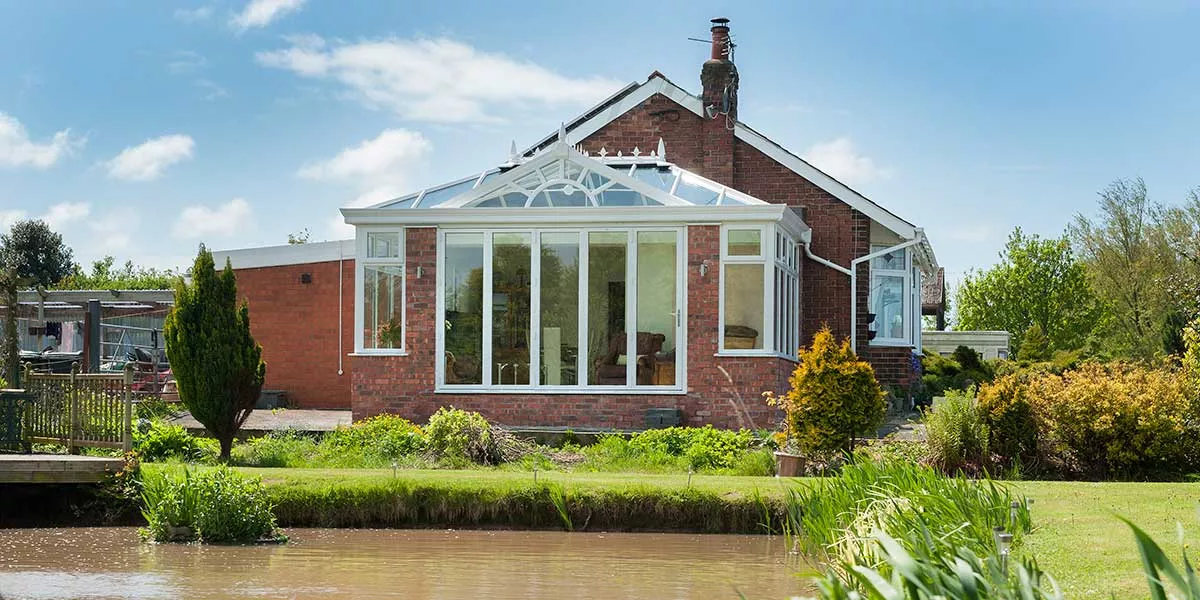Adding a Conservatory or Orangery to your property can significantly enhance its size, value, and attractiveness. However, before you proceed with extending your property, it’s crucial to ascertain whether planning permission is required.
Do you need planning permission for an orangery? As per UK regulations, planning permission is necessary for building on or altering land or buildings. Nevertheless, this isn’t universally applicable to conservatories, which are often covered by permitted development rights.

Planning Permission For Orangeries
Before anyone gets too far ahead of themselves they need to check whether any potential conservatory or orangery installation will require planning permission.
Breaching planning laws can prove disastrous! Your local authority could order you to make expensive modifications to the design to bring it in-line with the rules or even worse, tell you to completely knock it down and return the site back to how it was. You could also find it difficult selling the property in the future if a prospective buyer discovers that you have an extension that flouts planning laws (and believe us, they will find out).
You know you’re in the clear when it comes to planning permission and free to commence with the installation if all of these limits and conditions are met:
- No more than half the area of land around the “original house”* would be covered by additions or other buildings.
- No extension forward of the principal elevation or side elevation fronting a highway.
- No extension to be higher than the highest part of the roof.
- Single-storey rear extension must not extend beyond the rear wall of the original house* by more than three metres if an attached house or by four metres if a detached house.
- In addition, outside Article 2(3) designated land* and Sites of Special Scientific Interest the limit is increased to 6m if an attached house and 8m if a detached house until 30 May 2019.
- Maximum height of a single-storey rear extension of four metres.
- Extensions of more than one storey must not extend beyond the rear wall of the original house* by more than three metres.
- Maximum eaves height of an extension within two metres of the boundary of three metres.
- Maximum eaves and ridge height of extension no higher than existing house.
- Side extensions to be single storey with maximum height of four metres and width no more than half that of the original house.
- Two-storey extensions no closer than seven metres to rear boundary.
- Roof pitch of extensions higher than one storey to match existing house.
- Materials to be similar in appearance to the existing house.
- No verandas, balconies or raised platforms.
- Upper-floor, side-facing windows to be obscure-glazed; any opening to be 1.7m above the floor.
- On designated land* no permitted development for rear extensions of more than one storey.
- On designated land no cladding of the exterior.
- On designated land no side extensions.
* The term “original house” means the house as it was first built or as it stood on 1 July 1948 (if it was built before that date). Although you may not have built an extension to the house, a previous owner may have done so.
* Designated land includes conservation areas, national parks and the Broads, Areas of Outstanding Natural Beauty, and World Heritage Sites.
When you have “Permitted Development Rights” you’re also free to proceed with things. They apply to single storey rear extensions between 3 metres and 6 metres (for an attached house) and 4 metres and 8 metres (for a detached house) built before 30th May 2019.
Can You Add An Orangery on a Semi-Detached House?
Yes, it is certainly possible to install an orangery on a semi-detached house. With the right planning and design, an orangery can be a valuable addition to a semi-detached home. Key considerations include:
- Space Restrictions – Semi-detached houses tend to have small outdoor spaces, restricting the size of your orangery. Choosing a compact design helps maximise space without significantly reducing garden area.
- Structural and Planning Regulations – Since you share a wall with your neighbour, you may require a party wall agreement if your build affects the shared wall. Consulting a professional home improvement company, such as Eden Windows, ensures compliance with regulations.
- Noise Concerns – Large windows and a glass roof can let in external sounds, which may pose an issue with close neighbours. Opting for double or triple glazing significantly improves sound insulation. Additionally, incorporating solid roof elements can further reduce noise.
When looking at an orangery vs conservatory, you may choose an orangery as a solution to this, due to the increased sound insulation because of the more solid brickwork in the design compared to traditional conservatories.
For clarity on the issue, speak to the planning department at your local authority, or leave it to Eden Windows to sort out. If a planning application needs to be submitted we can also help with that. Book a 1 hour appointment today.